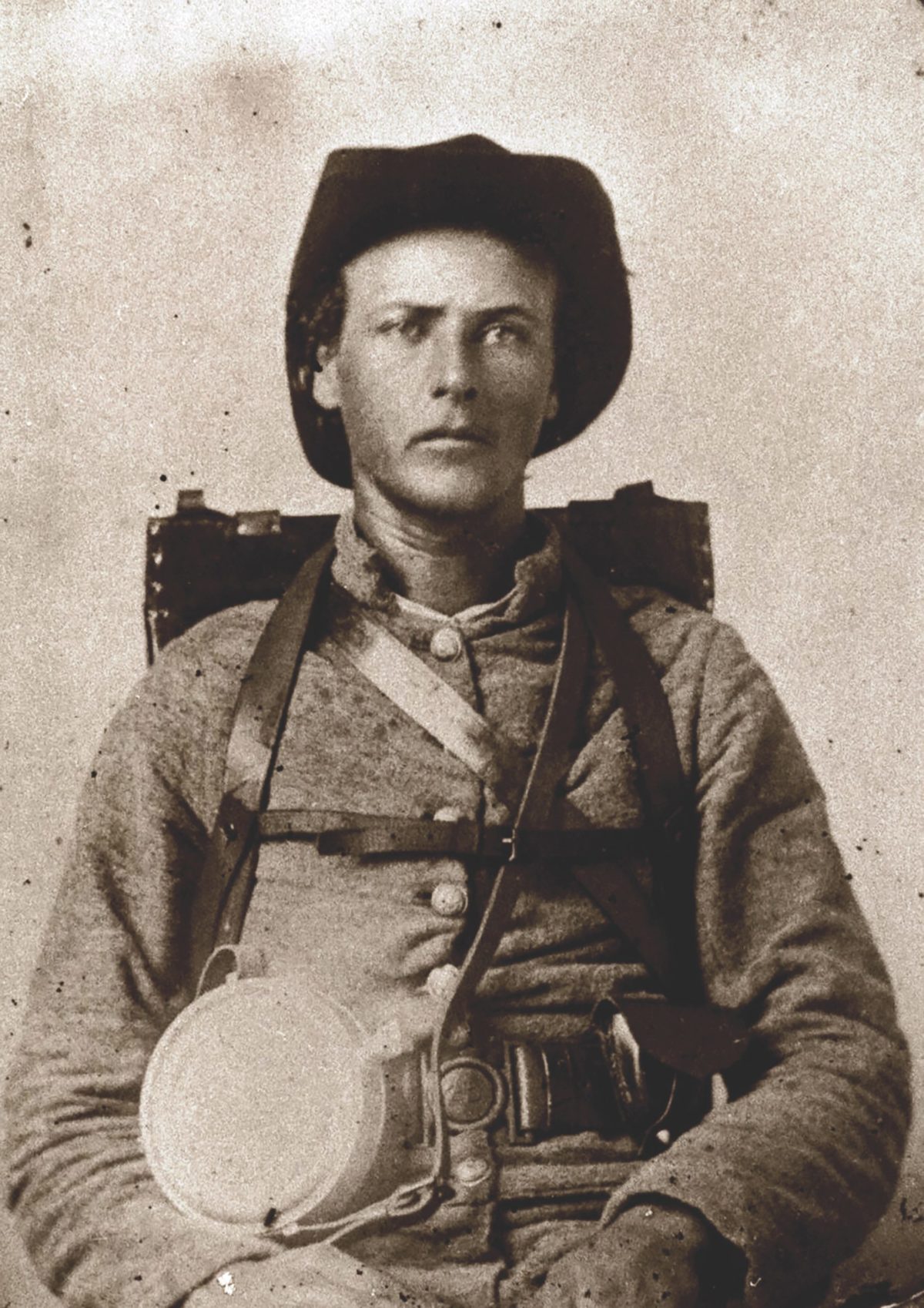September 1, 1862, dawned bright and clear on David and Margaret Miller’s farm north of quiet Sharpsburg, Md. Stepping from their two-story whitewashed home, David—known as D.R.—could see his barn and haystacks west across the Hagerstown Pike, running north from town and bisecting his property, while just east was the family’s garden and orchard. Bounded by three woodlots—known now as the North, East, and West Woods—Miller’s three well-tended fields east of the road reflected the farm’s prosperity. The northernmost, abutting the North Woods, had been recently plowed while another field to the south contained fallow grass. Farther south stood a 24-acre field awaiting harvest, thick with ripe corn. Miller had no way of knowing that within two weeks, his cornfield would become one of the most dangerous places on earth.
Of the many actions aligning to make that so was the decision by Confederate General Robert E. Lee to move his Army of Northern Virginia into Maryland after his late-August victory at the Second Battle of Manassas. Lee sold his move north to President Jefferson Davis as a way to enable Maryland to join the Confederacy. Also, winning a battle on Northern soil might persuade Britain and France to openly support Southern independence, break the Union naval blockade, and perhaps more. Lee’s men began crossing the Potomac River on September 4 and reached Frederick the following day. The general quickly scattered his forces across western Maryland preparing his next move.
Union Maj. Gen. George McClellan, meanwhile, reorganized his army to better chase Lee, creating three “wing commands” and unifying his cavalry into a single division while also streamlining army logistics from top to bottom. The unexpected acquisition of Lee’s campaign plan—the famous “Lost Orders”—handed McClellan another critical advantage.
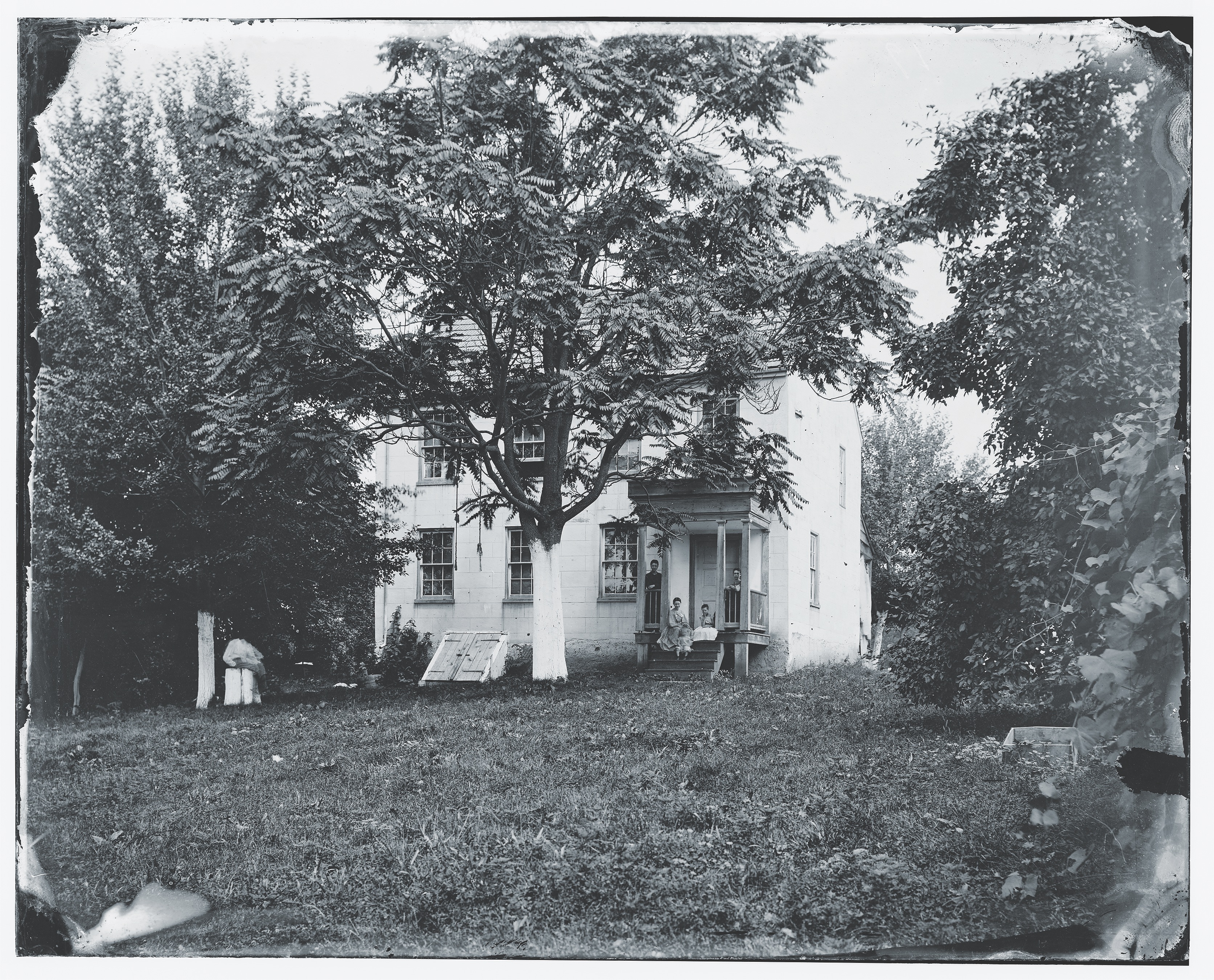
His campaign compromised, Lee moved west from Frederick to buy time and gain maneuvering room. Fighting at South Mountain on September 14 failed to stop McClellan’s relentless advance, and Lee concluded that returning to Virginia was his only option and ordered his army to gather at Sharpsburg. Word that Maj. Gen. Thomas J. “Stonewall” Jackson had secured the vital communication line at Harpers Ferry breathed fresh life into Lee’s campaign, however, and he gambled all on fighting at Sharpsburg.
Lee deployed his army along Sharpsburg’s north-south ridge, nearly astride the town, facing east toward Antietam Creek. The Confederates wanted to use long fields of fire to oppose McClellan, and then attack after he was winnowed by casualties.
September 16 found both armies only a mile apart, held in check by thick fog.
McClellan used the day to plan his attack for September 17, an assault built around Antietam Creek’s three crossings, the Upper, Middle, and Lower bridges and nearby fords. McClellan’s opening strike would use the Upper Bridge to hit the Confederate left, followed by a carefully coordinated assault on Lee’s right flank from the Lower Bridge, sometimes called the Rohrbach Bridge for a local family and soon to be forever known as Burnside Bridge. Blunting simultaneous flank attacks would thin Confederate forces in the center, where Union attackers crossing the Middle Bridge would strike the final blow. With the flank attacks cutting two of Lee’s escape routes—leaving only west to Shepherdstown open—he would be trapped, facing surrender or destruction.
McClellan ordered Maj. Gen. Joseph Hooker’s 1st Corps, which would lead the opening attack, to get underway by late afternoon. Shortly after 7 p.m., Maj. Gen. Joseph King Feno Mansfield’s 12th Corps moved to reinforce Hooker.
Hooker’s crossing was detected almost immediately. Confederate cavalry noticed the advance and quickly warned Lee, who had Maj. Gen. James Longstreet send Brig. Gen. John Bell Hood’s Division—the only Southern infantry nearby—in response. Facing north along the Hagerstown Pike, Hood’s presence bought time for Jackson’s entire command to deploy on Hood’s left.
At dusk, Hooker’s advance troops—Brig. Gen. Truman Seymour’s brigade of Pennsylvanians—encountered Confederate cavalry and infantry skirmishers from Colonel Alfred H. Colquitt’s Brigade defending the East Woods. Seymour pushed Colquitt back, revealing Hood’s infantry and artillery in Miller’s corn and grass fields. Thus ended September 16th’s brief fighting.
As his troops slumbered, Hooker surveyed the ground of the impending attack. Though it was dark and drizzly, the small white Dunker Church stood out above Miller’s rolling ground, framed by the three woodlots. Beyond that the enemy controlled the West Woods, but Hooker knew little more of their location. His plan called for Brig. Gens. Abner Doubleday and James Ricketts’ divisions to drive over the open ground toward the church, supported by Brig. Gen. George Meade’s Pennsylvania Reserves. The ultimate objective, however, remained reaching the ridge to break Lee’s left flank. Like many of his men, Hooker’s plan would not survive long after dawn.
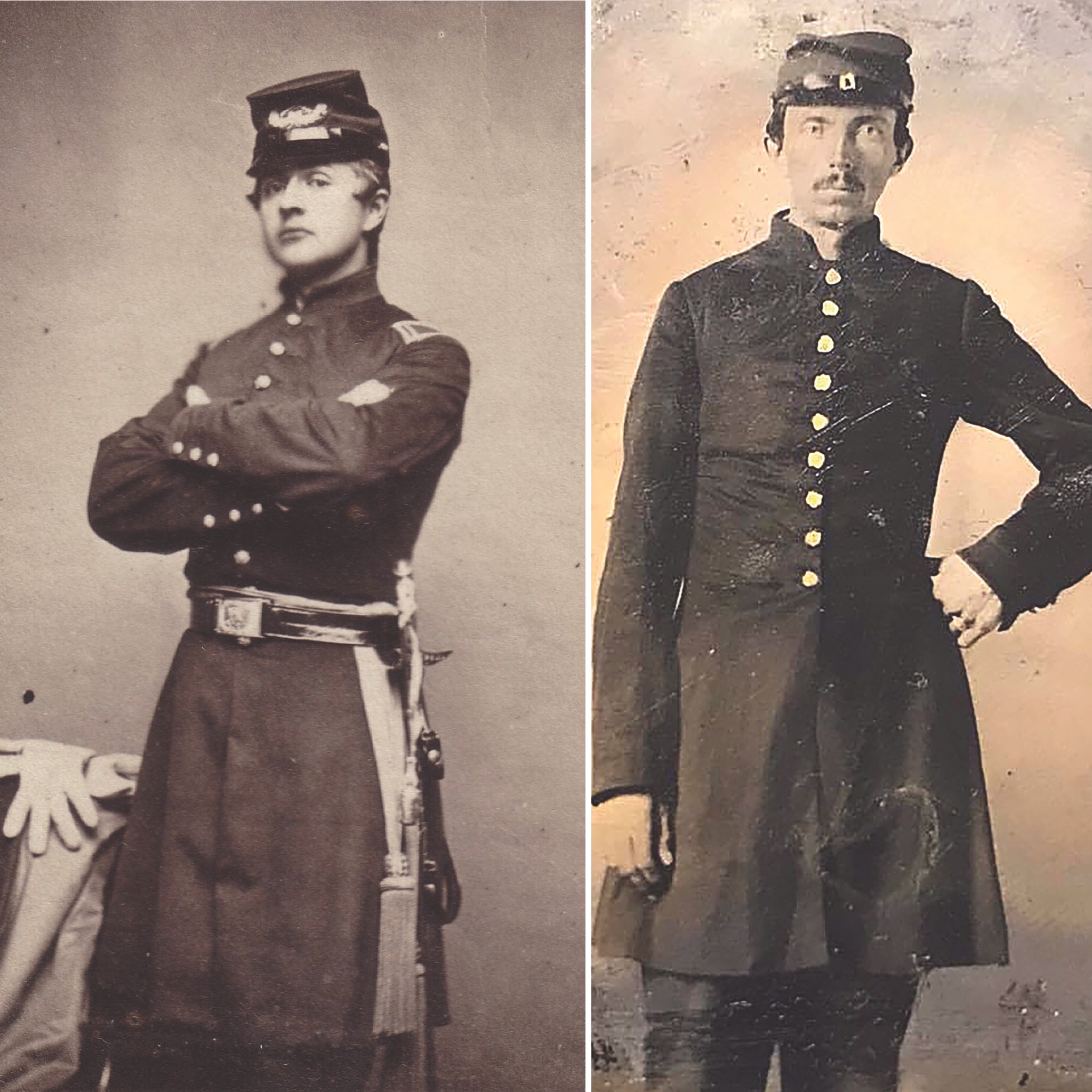
The rain ended at first light September 17, but a deadlier storm was brewing. Hooker’s plan took its first hit when both Doubleday and Ricketts sent forward individual 400- to 900-man brigades rather than their entire 3,000-man divisions. Doubleday ordered Brig. Gen. John Gibbon’s “Iron Brigade” south along the Hagerstown Pike, with Colonel Walter E. Phelps’ and Brig. Gen. Marsena Patrick’s brigades in support. Ricketts meanwhile directed both Brig. Gens. George L. Hartsuff’s and Abram Duryée’s brigades south through Miller’s fields toward the church. Ricketts’ reserve, Colonel William Christian’s brigade, was unexpectedly sent skirting the East Woods to flank an unexpected Confederate threat revealed by the growing daylight.
That new threat was 1,935 men of two brigades in Brig. Gen. Alexander Lawton’s Division, deployed perpendicularly to Jackson’s main line facing north, roughly 200 yards south of Miller’s cornfield. Georgia Colonel Marcellus Douglass was in command of Lawton’s men, and Colonel James Walker, leading Isaac Trimble’s Brigade, was posted in the same location by Jackson the previous night to resist exactly the advance Hooker intended. Brigadier General Harry Hays’ Brigade of Louisianans soon arrived as reinforcements for Lee’s left.
The Iron Brigade pushed south through Miller’s farmyard until reaching the still-standing corn. There, unseen Rebel fire from the corn ahead and the West Woods on the right halted the leading 6th Wisconsin, soon joined by the “Ragged Ass” 2nd Wisconsin—so-called for the sad condition of their trousers. Recalled Major Rufus Dawes of the 6th Wisconsin, “The bullets began to clip through the corn and spin through the soft furrows—thick, almost, as hail.” Confederate shellfire from Nicodemus Heights to their right rear began to “burst around us, the fragments tearing up the ground, and canister whistled through the corn above us.” The vicious gunfire stalled Doubleday’s half of Hooker’s attack.
Ricketts’ assault 300 yards to the east fared even worse. General Hartsuff, Ricketts’ best commander, was wounded while reconnoitering the field prior to the attack. The command vacuum left his brigade confused and immobile. Duryée’s brigade, meanwhile, marched determinedly south into battle by itself.
Duryée’s New Yorkers and Pennsylvanians endured terrific artillery fire from Nicodemus Heights and Colonel Stephen D. Lee’s cannons posted near the Dunker Church. Reaching the northern end of Miller’s cornfield, Duryée shifted to a battle front before ordering all 1,100 men to lie down. After Captains James Thompson’s and Ezra Matthew’s Pennsylvania batteries lobbed rounds into the cornfield to clear Rebel skirmishers, the men rose and picked a lane between corn rows and started forward again. The concealing corn briefly spared them from the shellfire, and on they pressed to the southern end of the field where the enemy waited.
The men of Lawton’s and Trimble’s brigades anxiously watched for signs of the Yankees they knew were somewhere among the corn. As the 31st Georgia’s skirmishers fled Union shells, Lawton’s men cried, “What’s the matter? What are you running for?” “You’ll soon see!” the scrambling Georgians replied. Colonel Douglass, pacing in the rear, directed Lawton’s men to pick a row and fire low, which would make every shot count when the enemy appeared. Nearer and nearer they came, until suddenly…
Nearing the fence bordering the southern edge of the Cornfield, Confederate rifle fire tore into Duryée’s line, blasting the Union regiments as they emerged from the corn to align with Seymour’s Pennsylvania Reserves, still in the East Woods from the previous night. Before the Federal lines met, however, Colonel Walker pushed three of Trimble’s Georgia and North Carolina regiments forward to a low rock ledge, placing them squarely on Duryée’s exposed left flank.

Duryée was losing men fast. Recalled Lieutenant Rush Cady of the 97th New York, “[Private] Sherman was squatting down in the act of priming, when hit by a solid shot, which nearly severed both legs at the knees, & took [off] his right hand at the wrist, the same shot killing Dick Handley instantly, going completely through his body. Sherman’s blood, flesh & pieces of bones flew all over & in the faces of the boys who were next to him. He asked for a drink of water, & then begged Alek to cut his throat, he was in such agony.” After 20 minutes of such gore, Duryée ordered a retreat.
As Yankee troops yielded, Lawton’s and Hays’ brigades pursued them into the Cornfield. But just beyond the Cornfield’s center, they were halted by threats to their flanks. Lawton’s left stalled on Gibbon’s 2nd and 6th Wisconsin, while Hays’ men drove right at Hartsuff’s brigade.
Hartsuff had finally moved once Colonel Richard Coulter of the 11th Pennsylvania assumed command. While too late to save Duryée’s men, its advance nonetheless stopped the latest Confederate drive. Barely 300 yards apart, both Hays’ and Hartsuff’s brigades were being torn apart by musketry, and Coulter’s men suffered additional slaughter as targets of S.D. Lee’s artillery adjacent to the Dunker Church. Coulter needed reinforcements, fast. A fresh Federal brigade suddenly appeared in the East Woods, and Coulter raced there to plead for its help. He had no idea what this simple act would cause.
Coulter was racing toward Colonel William Christian’s Brigade, which had been sent to support Duryée and Hartsuff by striking the Confederate flank. Christian was a Mexican War veteran, but this was his first brigade command under direct fire, and his approach to the battlefield was erratic to say the least. He ordered his brigade through a series of direction-changing maneuvers and periodically halted to have them drill in the manual of arms. When Coulter approached and asked for assistance, Christian snapped and rode away muttering that “he’d always had a great fear of shelling.” By abandoning his brigade, Christian left Coulter’s command stuck in its lonely, costly fight.
Colonel Peter Lyle, commanding the 90th Pennsylvania of Christian’s brigade, heard Coulter’s plea, however. Determined to act, with or without orders, Lyle marched his regiment into the northern end of the Cornfield, allowing Christian’s spent command to retreat toward the North Woods. Although the 90th Pennsylvania was only 264 strong, its fire began tearing apart what remained of Hays’ Brigade.
On the Cornfield’s western end, Lawton’s Brigade battled with Gibbon’s men. Gibbon had daringly split his brigade. He held the 2nd and 6th Wisconsin regiments in the corn while sending the 19th Indiana and 7th Wisconsin west across the pike to clear threats within the West Woods. Into the center of his position, Gibbon sent Lieutenant James Stewart’s two-gun section of the 4th U.S. Artillery, Battery B, which raced south to deploy on the pike’s western edge. As support, Hooker ordered Phelps’ brigade forward behind Gibbon in the corn while Doubleday sent Patrick’s brigade to aid Gibbon’s two regiments in the woods. If this pincers movement worked, Gibbon’s brigade would soon reunite and resume driving to the Dunker Church.
Seeing Lawton’s Georgians struggling in the Cornfield, Brig. Gen. William E. Starke—commanding Jackson’s Division—decided to act, advancing both the Stonewall and Taliaferro’s brigades out of the West Woods toward the pike. They arrived just as Jones’ and Grigsby’s brigades were retreating and the effort proved to be for naught. Starke, in fact, was mortally wounded as Gibbon’s two regiments emerged from the West Woods, pouring flanking fire into their left. Meanwhile, Gibbon’s two Wisconsin regiments and Phelps’ brigade sprang at them from the Cornfield’s southern end.
“We jumped over the fence, and pushed on, loading, firing, and shouting….There was, on the part of the men, great hysterical excitement, eagerness to go forward, and a reckless disregard of life, of everything but victory,” recalled Major Dawes. Pivoting on Phelps’ 2nd U.S. Sharpshooters, Gibbon’s regiments hit Starke’s two brigades in front and flank at nearly the same moment Lawton’s and Hays’ brigades—short on ammunition, thinned by casualties, and seeing reinforcements moving behind them—yielded ground.
The Cornfield had changed hands four times in barely an hour, and it seemed Hooker might have won the fight. He was, however, about to be brought back to earth by John Bell Hood’s men. Hood’s infantry column, sent to aid Lawton, quickly deployed across the Cornfield’s south edge until reaching the East Woods. The men had marched into battle eating their half-cooked breakfast, johnnycakes or pork, from their bayonets. With Colonel William T. Wofford’s “Texas Brigade” on the left and Colonel Evander M. Law’s Brigade of Alabamians, Mississippians, and North Carolinians on the right, Hood’s Division swept north into the Cornfield.
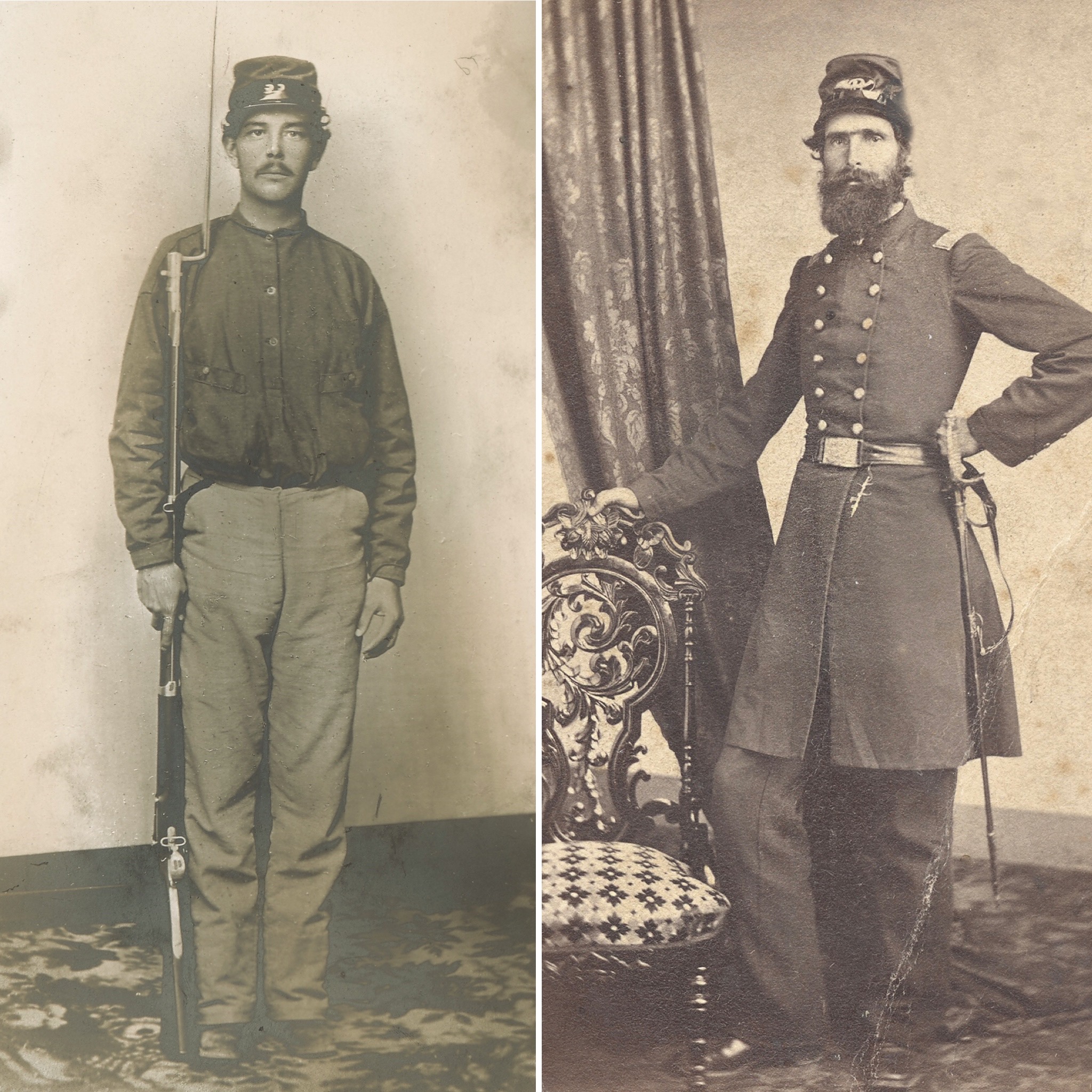
“A long and steady line of rebel grey, unbroken by the fugitives who fly before us, comes sweeping down through the woods and around the church,” recalled Dawes. “They raise the yell and fire. It is like a scythe running through our line.” Wofford’s Texans swept away Gibbon’s short-lived victory, while across the Cornfield, Law’s Brigade drove away the stout 90th Pennsylvania. In mere minutes, Hood had regained control of the Cornfield and all looked promising for the Rebels. Until suddenly it wasn’t.
The two guns in Stewart’s 4th U.S. Artillery blasted Wofford’s left flank, stalling Wade Hampton’s Legion and the 18th Georgia, while across the Cornfield, Evander Law’s right was stalled by Christian’s Brigade, restored to order and firing from cover in the southern end of the East Woods. In response, Law divided his brigade. Half his men pushed north through the open corn and the remainder drove eastward, clearing Christian’s men from the East Woods. Wofford also shifted regiments and faced his entire brigade west along the Hagerstown Pike, reinforcing each flank by posting the 4th Texas on the left and moving the 1st Texas toward the right. But, as General Hood later observed, the 1st Texas had “slipped the bridle and got away from the command.” The Lone Star boys were driving the Yankees back as they moved north, but they were alone. Their uncoordinated advance also exposed Wofford’s unprotected right flank.
Patrick’s brigade and Gibbon’s 19th Indiana and 7th Wisconsin advanced from the West Woods to threaten Wofford’s open right, while a single volley from George Meade’s 3,131-man division—the last of Hooker’s fresh 1st Corps troops to arrive on the field—nearly swept away the 1st Texas. Hood ordered his men to retreat, and the Cornfield exchanged hands for a sixth time.
Even so, hope was already marching northward from Samuel Mumma’s fields. About 7 a.m., Maj. Gen. D.H. Hill advanced Ripley’s Brigade to Jackson’s aid. Once deployed across the Cornfield’s width, Ripley’s Georgians and North Carolinians swept northward.
Meade’s force advanced swiftly, too. Gibbon pushed forward his left-most regiment, the 9th Pennsylvania Reserves, to support Patrick’s brigade. At the Cornfield’s southern fence, however, they found Patrick’s men gone and their brigade’s other two regiments stalled in the center of the Cornfield by enemy fire from the East Woods. Alone and exposed, short on ammunition and with mounting casualties, the 9th Pennsylvania Reserves retreated, yielding the Cornfield once more.
Ripley’s Brigade, with Colonel George Doles of the 4th Georgia commanding, controlled the position by fire, rather than presence, remaining south of the Cornfield to align with Law’s 4th Alabama, 21st Georgia, and 5th Texas holding the southern East Woods. Left behind by miscommunication, they halted Meade’s advance and now anchored Confederate hopes to retain control of the Cornfield.
Hooker’s next deadly countermove was already in play, as Mansfield’s 7,500-man 12th Corps—a mix of mostly untested and a few veteran regiments—arrived between the North and East Woods. Unlike as he had done with his 1st Corps, Hooker would utilize the full mass of Mansfield’s corps, maneuvering two 2,500-man divisions rather than individual brigades. The division of Brig. Gen. Alpheus Williams drove directly south toward the Cornfield as Brig. Gen. George S. Greene’s division swung on Williams’ left through the East Woods. The two divisions were to seize McClellan’s objective—the Dunker Church ridge.
Hooker knew that for his grand advance to succeed, Law’s Rebels, who had stopped Meade’s advance, had to be dispatched. Hooker also knew that assigning Mansfield to lead the task was a risk. Mansfield had assumed command of the corps only five days earlier, had not led troops in battle since 1847 during the Mexican War, and lacked confidence in his new command. Diverting Brig. Gen. Samuel Crawford’s brigade—three veteran regiments and the massive but green 124th, 125th, and 128th Pennsylvania—to this task, Mansfield personally led regiments into position astride the East Woods’ northern end. Exposed to the nearby maelstrom of battle by this role, Mansfield fell mortally wounded. The first Union, and third overall, general officer to fall before 9 a.m.
Williams quickly stepped into the command void, however, completing Mansfield’s task by sending the 128th Pennsylvania south into the woods. The inexperienced Keystoners struck Ripley’s right flank and Law’s 4th Alabama and retired, but the attack persuaded Doles that Ripley’s Brigade couldn’t withstand another fight. As if on cue, D.H. Hills’ next brigade, Colonel Alfred Colquitt’s, appeared, crossing Ripley’s front like a human curtain to enable Doles’ retreat. Colquitt’s timing was impeccable, but it was the last bit of luck the South enjoyed in the Cornfield.
At nearly the same moment, the 12th Corps attack wound into high gear. Crawford’s brigade, holding the northern East Woods, served as an anchor in the center; on their right, Gordon’s brigade moved directly south toward the Cornfield as Greene’s leading brigade on the left, Lt. Col. Hector Tyndale’s 1st Brigade—Pennsylvania and Ohio boys—pivoted southwestward into the East Woods, driving the Rebels before them.
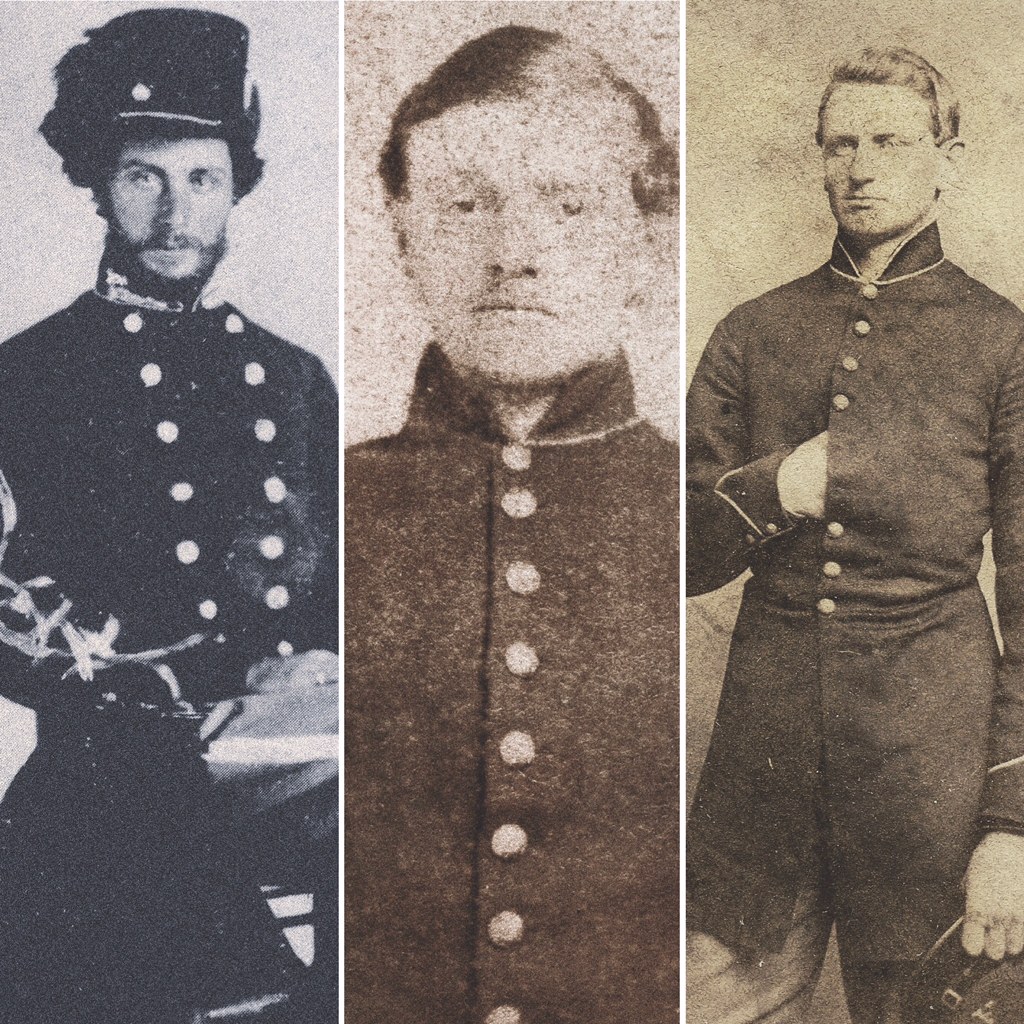
The Confederacy’s final hope for holding this position, Garland’s Brigade of D.H. Hill’s Division, soon proved not up to the task. It had lost 359 casualties only four days before during the South Mountain fighting, including General Garland, leaving its five North Carolina regiments under Colonel Duncan McRae unnerved by prospects for another fight. Once into the chaotic East Woods, the 5th North Carolina’s commander recalled, “Captain T.P. Thompson…came up to me in a very excited manner and tone cried, ‘They are flanking us! See, yonder’s a whole brigade!’ [W]hen this act of indiscretion occurred, they began to break and run.”
McRae’s reinforcements fled just as Tyndale’s brigade appeared. Emerging largely unopposed into the Cornfield, Tyndale hit Colquitt’s thinned brigade while Greene’s second brigade, Colonel Henry Stainrook’s, arrived on their left. Swinging like a barn door, Greene’s united division swept away the East Woods’ remaining defenders, Law’s three regiments.
Brigadier General George Gordon’s brigade advanced, too. Recalled Robert Gould Shaw, a captain in the 2nd Massachusetts who would go on to fame with the 54th Massachusetts the following July, “[T]he Brigade advanced through the cornfield in front, which…was full of their dead and wounded….Beyond the cornfield was a large open field, and such a mass of dead and wounded men, mostly Rebels, as were lying there, I never saw before; it was a terrible sight….”
Greene’s division pressed inexorably westward across the Cornfield, sweeping remaining Confederate resistance before it. Benjamin Witcher of the 6th Georgia proposed to make a stand with some prone comrades, until his friend shook several, proving they were dead. When the 12th Corps reached the Hagerstown Pike, it signaled the 10th time that the Cornfield had changed hands in barely two hours.
The Cornfield was securely in Union hands, but it remained to be seen if Maj. Gen. Edwin V. Sumner, who replaced the wounded Hooker in command, could meet McClellan’s first objective. Stonewall Jackson also faced a daunting task, sustaining the Confederate left. Resolving such issues would require many hours of fighting.
The fight for the Cornfield had consumed all of Hooker’s forces on the Federal right, the 1st and 12th Corps, while two-thirds of Jackson’s available force—Lawton’s, Jackson’s, and Hood’s divisions—and three of the five brigades in D.H. Hill’s Division were similarly spent.
The Cornfield’s human cost stunned witnesses. One Confederate wrote, “Around me are dead and wounded in horrid crowds,” while another recalled, “frequently places where for 50 or 60 yards you could step from one dead Yank to another & walk all over the ground without touching it with your foot.” A New Yorker observed, “We saw some without any head. Some without any arms. Some without any legs. Some shot through their guts…It took hard to see them lay there bleeding to death.” Wofford’s 1st Texas lost 45 killed and 141 wounded of the 226 Texans who entered the Cornfield, an 82.3 percent casualty rate—the greatest single regimental loss in any battle for either side of the entire war. Hartsuff’s 12th Massachusetts lost 49 killed and 165 wounded of the 334 men who advanced into the Cornfield, generating
a 64 percent casualty rate.
Nightfall on September 17 brought an end to Antietam’s fighting and marked many historic transformations on the fields surrounding Sharpsburg. America’s bloodiest single day forever applied a capital letter to Farmer Miller’s Cornfield, and made it a national symbol of death and sacrifice.
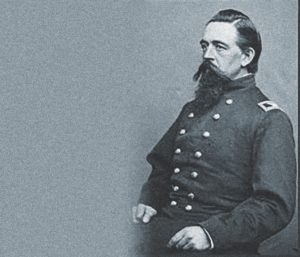
Born in 1825 in Utica, N.Y., William Henry Christian served with the 1st New York Volunteers throughout the Mexican War, though he saw no combat. He then served as his local militia’s drillmaster. With such military credentials, he was able to form and lead the 26th New York Infantry when the Civil War began. Colonel Christian’s first battle experience on October 21, 1861, proved a complete disaster, however. He led a 350-man force to capture Confederate cavalry operating near Pohick Church, Va., but the Rebel troopers slipped away. During the return march, Christian lost control of his force and his men looted local homes, with one soldier killed in the process. Christian and his regiment faced their next test at the Second Battle of Bull Run, when he was ordered to hold a position along Chinn Ridge on the Union left flank. But while his New Yorkers faced the unexpected attack by Lt. Gen. James Longstreet’s Right Wing, Christian was well behind the lines, lying under a tree, wrapped in a blanket, and being attended to by a surgeon. He had left his command, Christian later explained, because he suffered from both heat stroke and a severe case of poison ivy on his hands. Once Chinn Ridge’s intense fighting ended that day, Christian experienced a miraculous recovery when he assumed brigade command in place of the wounded Brig. Gen. Zealous Tower. That evening, as the brigade fell back toward safety, the newly minted brigade commander rode among his ranks, waving the brigade flag and encouraging “his men.” Understandably suspicious, the 26th New York’s officers gathered in secret to consider alerting division commander Brig. Gen. James Ricketts of Christian’s actions. Probably considering the implications if they were mistaken, the group decided against raising their concern. As it would turn out, this was the wrong decision, one that would have grave implications two weeks later at Antietam. –D.A.W.[/box]
David A. Welker is a professional historian and a military analyst for the federal government who writes from Centreville, Va. He has also published Tempest at Ox Hill, and this article is adapted from his 2020 release, The Cornfield: Antietam’s Bloody Turning Point, published by Casemate Press.

